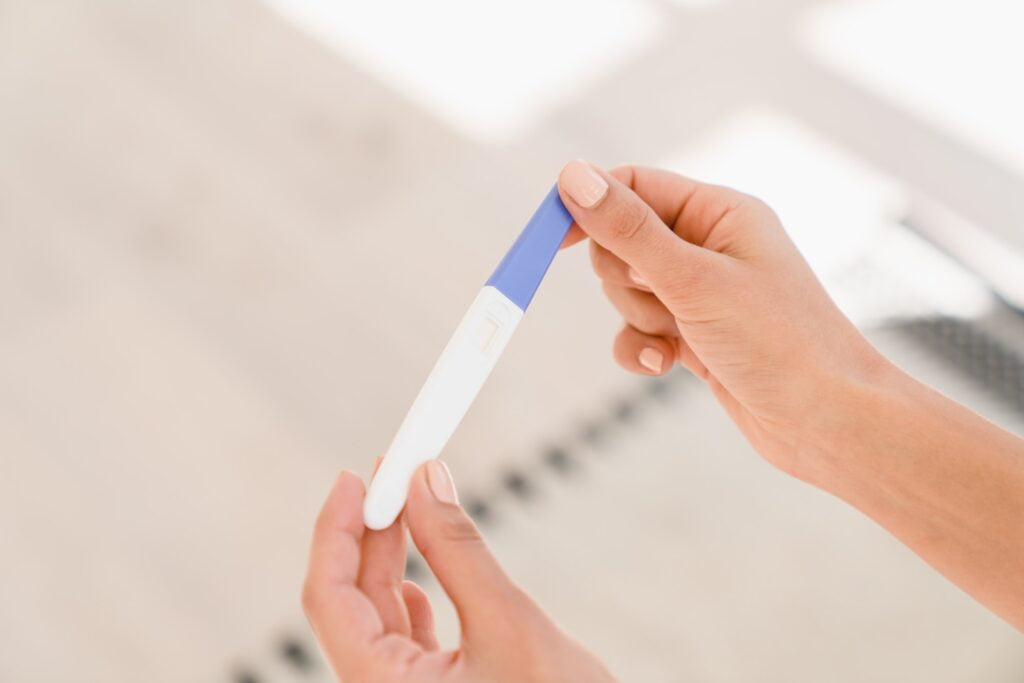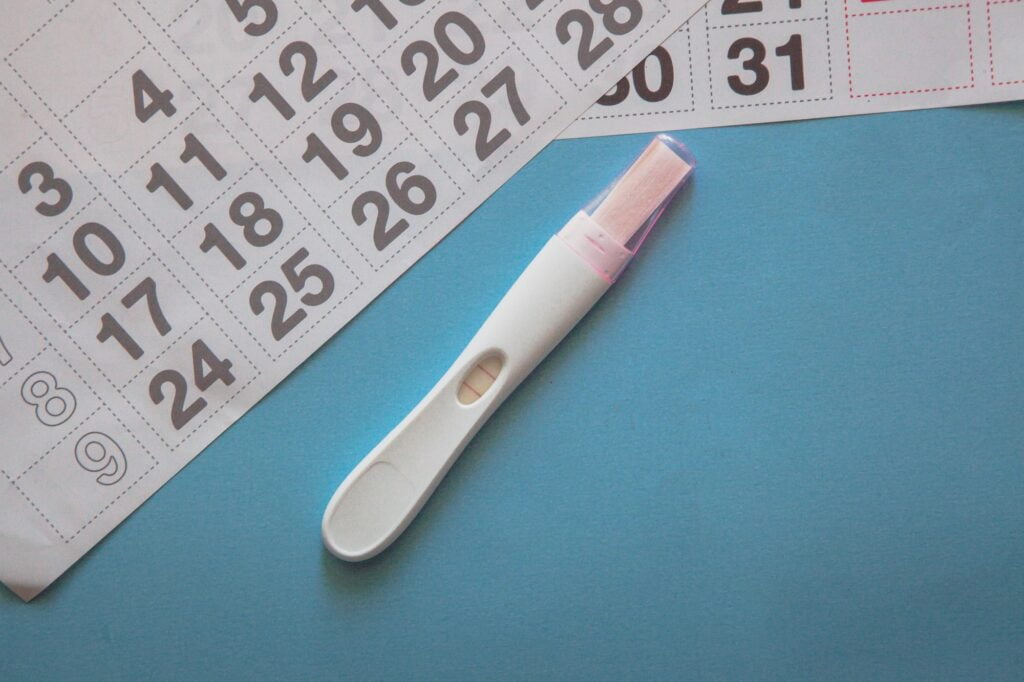Table of Contents
ToggleNavigating the journey to parenthood can be an exciting yet nerve-wracking time. The confirmation of a pregnancy, especially, can be full of anticipation, joy, and sometimes, a dash of confusion. “Am I really pregnant?” you may find yourself asking. “What does this test result mean?” You’re not alone!
One term you might stumble upon in your quest for knowledge is the “Dye Stealer Pregnancy Test.” Sounds a bit mysterious, doesn’t it? Perhaps even a little intimidating. But there’s no need for apprehension. This intriguingly named test is a powerful tool on your path to parenthood and understanding it can help quell any lingering anxieties.
To put it simply, a dye stealer pregnancy test is a type of home pregnancy test that can offer a clearer indication of a positive result. But there’s much more to the story than that, and unlocking this knowledge can be empowering. So, let’s gear up to delve into the captivating world of dye stealer pregnancy tests. We’ll explore their significance, how they function, and how they differ from your regular pregnancy tests. So, gather your queries, and let’s move on to unravel the secrets of the dye stealer!
Understanding Pregnancy Tests: The Basics
To truly understand the specifics of a dye stealer pregnancy test, we first need to grasp the fundamental principles of pregnancy tests in general. From first-timers to seasoned parents, the basics serve as a guidepost, clarifying the complex nuances that can sometimes accompany these tests.
What is a Pregnancy Test?
A pregnancy test is a tool used to detect the presence of Human Chorionic Gonadotropin (hCG), a hormone produced during pregnancy. Whether it’s a test you take at home or in a doctor’s office, they all serve the same purpose – to provide early confirmation of a potential pregnancy. The test is typically performed using urine, although blood tests are also available. They have been designed for ease of use and clarity of results, making them a vital first step in the journey to parenthood.
How do Pregnancy Tests Work?
Pregnancy tests are fascinating, and their workings often seem nothing short of miraculous. When an embryo implants into the uterine wall, it triggers the release of hCG into the mother’s bloodstream and later into the urine. This is where the pregnancy test comes into play. When a woman’s urine comes into contact with the test strip, it reacts with a special antibody present in the strip that can detect hCG. If the hormone is present, a positive result is produced, typically displayed as two lines or a ‘+’ sign on the test strip.
Understanding these fundamental aspects sets the stage for a deeper comprehension of more specific types of pregnancy tests. Now that we’ve tackled the basics, we’re ready to move forward and explore the intriguing world of dye stealer pregnancy tests.
What is a Dye Stealer Pregnancy Test?
As we delve deeper into the vast realm of pregnancy tests, we stumble upon a specific phenomenon that has left many parents-to-be intrigued, if not perplexed – the dye stealer pregnancy test. But what exactly does this term mean, and why is it so crucial?
Dye Stealer: Unveiling the Mystery
When we talk about a ‘dye stealer,’ we refer to a very clear positive pregnancy test result. Specifically, it’s when the test line appears darker than the control line. This phenomenon is called a dye stealer because it seems as though the test line has ‘stolen’ the dye from the control line, hence appearing more pronounced.
Why It’s Crucial: Dye Stealer’s Role
The significance of a dye stealer lies in its potential implications. Primarily, it indicates high levels of hCG, suggesting a strong pregnancy. These high levels can occur for various reasons, including a more advanced stage of pregnancy or a multiple pregnancy, such as twins or triplets. While a dye stealer isn’t a definitive confirmation of any of these conditions, it can act as an early hint, prompting further tests and confirmations.
How is a Dye Stealer Different from Regular Pregnancy Tests?
In essence, a dye stealer is not a different type of pregnancy test; rather, it is a distinct result observed on regular pregnancy tests. While typical positive pregnancy test results show the test line as being equal in darkness or slightly lighter than the control line, a dye stealer is marked by a test line that is significantly darker.
Understanding this fascinating concept of a dye stealer illuminates another facet of pregnancy detection. Yet, the dye stealer’s occurrence is intrinsically tied to scientific principles and hormonal fluctuations, shedding light on the dynamic world of pregnancy biology. Therefore, let’s move on to uncover the science behind dye stealer pregnancy tests.
The Science Behind Dye Stealer Pregnancy Tests

The enigmatic dye stealer pregnancy test may seem perplexing at first glance, but the principles that govern its occurrence are deeply rooted in the science of human biology. To fully appreciate the process, it’s crucial to understand the role of hCG levels and the mechanism that drives a dye stealer test.
Understanding the Role of hCG Levels
Human chorionic gonadotropin (hCG) is a hormone that plays a central role in pregnancy. It is produced in the placenta after implantation occurs and is responsible for maintaining the pregnancy during its early stages. As a result, it’s also the hormone that pregnancy tests detect. After conception, hCG levels typically double approximately every 48 to 72 hours and reach their peak around 8-11 weeks into pregnancy. Beyond this point, the levels start declining and level off for the rest of the pregnancy.
The Mechanism of a Dye Stealer Test
Pregnancy tests, whether they are regular or digital, work by detecting the presence of hCG in your urine. The test contains two lines: a control line and a test line. The control line is meant to darken as a means of validating that the test is working correctly, while the test line darkens if hCG is detected, signifying a positive result.
In a dye stealer scenario, the hCG levels are so high that the test line becomes visibly darker than the control line. It seems as though the test line has ‘stolen’ the dye from the control line. It’s simply a reflection of high hCG levels and doesn’t indicate anything wrong.
Understanding the science behind a dye stealer can offer parents a more detailed insight into their pregnancy journey. It’s equally important, however, to be able to interpret these tests correctly. So, let’s move on to explore how to read and interpret dye stealer pregnancy test results.
Reading and Interpreting Dye Stealer Pregnancy Test Results
Reading and interpreting the results of a dye stealer pregnancy test can be daunting, especially for first-time parents. However, with a clear understanding of what to look for, it becomes an easy task.
What Does a Positive Dye Stealer Look Like?
A positive dye stealer test is unmistakable. When you take a home pregnancy test, two lines will appear: the control line and the test line. In a standard positive pregnancy test, the test line is visible but often lighter than the control line.
However, in a positive dye stealer test, the test line will be visibly darker than the control line. This darker test line can sometimes be so intense that it appears to have “stolen” the dye from the control line, hence the term “dye stealer.” It’s a clear indication that hCG levels are exceptionally high, which is typically observed several weeks into a pregnancy.
What Does a Negative Dye Stealer Mean?
A negative dye stealer result means that the test line does not become darker than the control line. It could either be a straightforward negative result, with only the control line showing, or it could be a positive pregnancy test with a test line lighter than the control line.
Keep in mind, a negative dye stealer does not necessarily mean a negative pregnancy test. It simply implies that hCG levels are not excessively high enough to create a dye stealer effect.
With a thorough understanding of dye stealer pregnancy tests, you can now read and interpret the results with confidence. However, it’s also essential to consider the accuracy of these tests. So, let’s move on to delve into the precision of the dye stealer pregnancy tests.
How Accurate is the Dye Stealer Pregnancy Test?
While dye stealer pregnancy tests offer an appealing way to observe the progression of your pregnancy, it’s important to understand their level of accuracy and what factors can affect the results.
Factors Influencing Accuracy
A dye stealer test’s accuracy largely depends on the timing of the test. Given that it signifies very high hCG levels, it is unlikely to show up in the early stages of pregnancy. Taking the test too early could result in a false negative for a dye stealer, even though a regular pregnancy test might show positive.
Additionally, individual differences in hCG production and metabolism can also affect the outcome. Some women might produce hCG at a higher rate, achieving dye stealer status sooner, while others may take a longer time. Variations in the urine concentration, often affected by fluid intake and time of the day, can also influence the test result.
Misconceptions about Dye Stealer Test Accuracy
There’s a common misconception that a dye stealer indicates a healthier or stronger pregnancy. However, this isn’t necessarily true. A dye stealer merely indicates high hCG levels and does not provide any concrete details about the viability or the health of the pregnancy.
Another misunderstanding is the assumption that a dye stealer means a multiple pregnancy. While it’s true that multiple pregnancies often result in higher hCG levels, a dye stealer is not a definitive sign of twins or triplets. Many other factors can contribute to high hCG levels.
Remember, while home pregnancy tests, including dye stealers, are useful tools, they cannot replace professional medical advice and testing. If you have any doubts or concerns, it’s always best to consult with a healthcare provider.
Now that we’ve addressed the accuracy of dye stealer pregnancy tests, let’s move on to compare them with regular pregnancy tests, which can help you decide which type of test might be more suitable for your needs.
Comparison: Dye Stealer vs. Regular Pregnancy Tests

When choosing a pregnancy test, it’s essential to understand the benefits and drawbacks of both dye stealer and regular tests. Each serves a different purpose and offers its unique advantages and disadvantages.
Pros and Cons of Each Test
Regular Pregnancy Tests: These tests are useful for early detection of pregnancy. They can offer positive results as early as a few days after a missed period, sometimes even sooner. They’re simple to use, relatively inexpensive, and widely available. However, their accuracy can be affected by various factors like the concentration of hCG in the urine, which can vary based on the time of day and fluid intake.
Dye Stealer Tests: These tests provide an additional layer of information by not just indicating pregnancy but also showing high levels of hCG, which could be an indicator of the progression of the pregnancy. However, they’re not suitable for early detection since high hCG levels are required for a dye stealer result. Misinterpretation can also be a disadvantage with the dye stealer tests, as it’s often mistaken as a sure sign of a strong pregnancy or multiples.
Making the Right Choice for You
The choice between a regular pregnancy test and a dye stealer test depends on your individual needs and circumstances. If you’re trying to confirm a pregnancy in its early stages, a regular pregnancy test is the go-to option. However, if you’re further along in your pregnancy and curious about your hCG levels, a dye stealer test could be a fascinating choice. Always remember, though, that while home tests are helpful, they don’t replace the need for professional medical care.
So far, we’ve primarily discussed dye stealer tests from a technical perspective. But what does it mean for parents? How does it affect your journey? Let’s delve deeper into the significance of dye stealer pregnancy tests for parents.
Importance of Dye Stealer Pregnancy Tests for Parents
Navigating the journey of pregnancy can feel like steering a ship through the open sea, full of unexpected twists and turns. Amid all this, dye stealer pregnancy tests can provide a measure of reassurance, offering a distinct indication that the pregnancy is progressing due to high hCG levels.
Situations Where a Dye Stealer Test Might Be Useful
A dye stealer test isn’t a necessary part of every pregnancy journey, but it can offer valuable information in specific scenarios.
1. Curiosity about Pregnancy Progression: If you’re curious about how your pregnancy is progressing, a dye stealer can provide a visual indication of high hCG levels. Though it’s not a complete assurance of a healthy pregnancy, it does signal strong hCG production.
2. After Experiencing Pregnancy Loss: For those who’ve experienced miscarriages or chemical pregnancies, seeing a dye stealer result can provide a comforting sign. High hCG levels can be an encouraging indication of a potentially healthier pregnancy.
3. Suspecting Multiples: If there’s a suspicion of a twin or multiple pregnancy due to other signs and symptoms, a dye stealer test could provide another hint due to the typically higher hCG levels associated with multiple pregnancies.
However, it’s important to remember that a dye stealer test is just one piece of the puzzle. No home pregnancy test can provide a full picture of your pregnancy health or progress. Regular prenatal care is crucial to monitor the health of both the mother and the baby.
With this knowledge at hand, many queries might be floating in your mind about dye stealer tests. Let’s move forward and address some frequently asked questions about these unique pregnancy tests.
FAQs about Dye Stealer Pregnancy Test
The complex nature of dye stealer pregnancy tests can naturally lead to a host of questions. We’ve collected some frequently asked questions to help guide you through your dye stealer journey.
What is a dye stealer pregnancy test?
A dye stealer pregnancy test is a home pregnancy test where the test line is darker than the control line. This typically indicates a high concentration of the pregnancy hormone hCG in the urine.
What does a dye stealer mean?
A dye stealer is a positive sign, indicating high levels of hCG. It suggests that the pregnancy is progressing, with the body producing increasing amounts of hCG.
Does a dye stealer guarantee a healthy pregnancy?
While a dye stealer can be a positive indication of a progressing pregnancy due to high hCG levels, it does not guarantee a healthy pregnancy. Regular prenatal care remains essential throughout pregnancy.
Can I get a dye stealer and still miscarry?
Unfortunately, a dye stealer doesn’t rule out the risk of miscarriage or other complications. Pregnancy involves a host of factors beyond hCG levels. It’s essential to consult with your healthcare provider for comprehensive pregnancy care.
Why is my test line not as dark as the control line?
This could mean that the hCG levels in the urine are not high enough to saturate the test line. It’s not necessarily a cause for concern, especially if taken early in pregnancy when hCG levels are still low.
How soon can I see a dye stealer?
A dye stealer usually appears when hCG levels are particularly high, typically around 3-4 weeks after conception. However, it varies for each individual.
Is a faint line on a pregnancy test a bad sign?
A faint line often simply means lower hCG levels, which can be common in early pregnancy. However, if the line doesn’t get darker over time or lightens, it might indicate a problem and should be discussed with a healthcare provider.
Can a dye stealer test be wrong?
While dye stealer tests are generally accurate, false positives or negatives can occur due to factors like testing too early, diluted urine, or errors in test usage.
Does a dye stealer mean twins?
A dye stealer could indicate a multiple pregnancy since hCG levels are typically higher with multiples. However, it’s not a definitive sign. An ultrasound is the only sure way to confirm a multiple pregnancy.
How often should I test to see a dye stealer?
There’s no set rule, but testing every 48-72 hours could allow you to see the progression. Frequent testing can lead to anxiety, so it’s best to balance curiosity with peace of mind.
To ensure you’re using the dye stealer test correctly, let’s delve into some tips and tricks for taking a dye stealer pregnancy test.
Tips and Tricks for Taking a Dye Stealer Pregnancy Test
Taking a dye stealer pregnancy test is no different from a standard home pregnancy test, but understanding some tips can ensure you get the most accurate results.
Firstly, timing is crucial. While these tests can detect pregnancy early, waiting until a missed period can provide a more accurate result. Testing too early, when hCG levels are still low, may lead to a faint line or a false negative.
Secondly, consider the time of day. The first-morning urine typically contains the highest concentration of hCG, making it the best time to test if you’re looking for a dye stealer.
Lastly, it’s essential to follow the test instructions carefully. Each brand may have different usage and interpretation instructions. For instance, leaving the test for longer than recommended can result in an evaporation line, which may be mistaken for a positive result.
Finally, remember that while a dye stealer can be a positive sign, it’s not a complete picture of your pregnancy health. Regular consultations with your healthcare provider are crucial for a safe and healthy pregnancy journey.
With these tips at hand, let’s summarize everything we’ve learned about dye stealer pregnancy tests.
Wrapping Up: A Parent’s Guide to Dye Stealer Pregnancy Tests
The journey through pregnancy is a beautiful one, filled with a mix of emotions – anticipation, excitement, and often a sprinkle of anxiety. Dye stealer pregnancy tests serve as one tool among many that help parents navigate this journey. A deeper understanding of these tests can alleviate some anxieties and offer a sense of control.
We’ve learned that pregnancy tests work by detecting the hormone hCG, and that dye stealer tests are essentially the same, but their results are interpreted differently, offering insight into the concentration of hCG in the body. The science behind these tests, the accuracy, and the factors influencing it were also brought into focus.
When comparing regular tests and dye stealers, remember that both have their pros and cons. The choice ultimately depends on your personal needs and circumstances. Dye stealer tests can be particularly useful in specific situations, and armed with our FAQ guide, you are now better prepared to interpret the results.
Finally, it’s essential to remember that while these tests provide early indicators, regular health checks remain vital throughout pregnancy.
And as your pregnancy progresses and eventually when you welcome your little one, there will be a whole new set of joys and challenges to navigate. For instance, you may find our guide on 114 things to teach your son useful. Or if you’re already dealing with the toddler stage, our article on how to deal with toddler tantrums could provide some much-needed advice. No matter what stage of parenthood you’re in, we’re here to provide you with knowledge and support.









